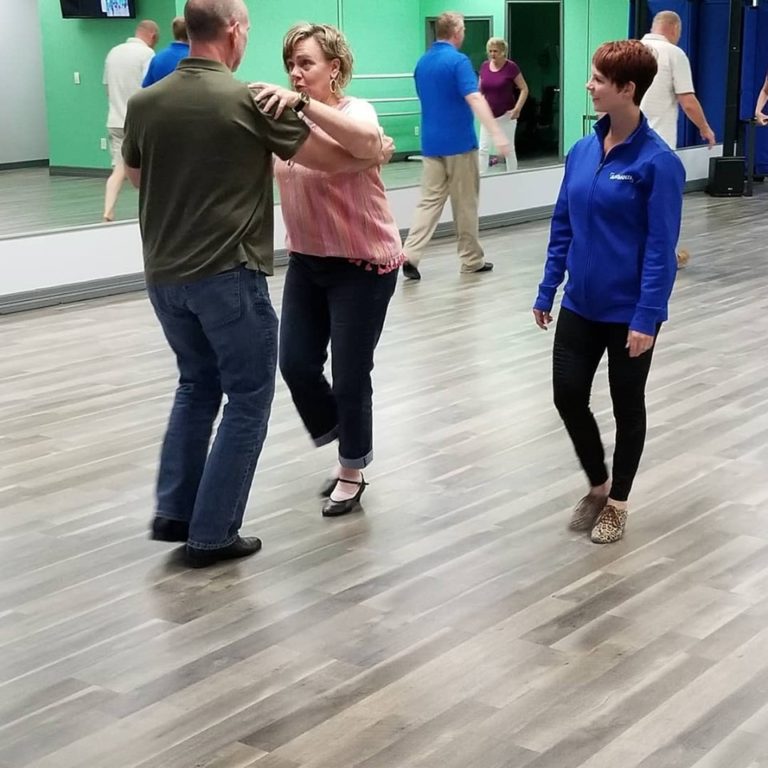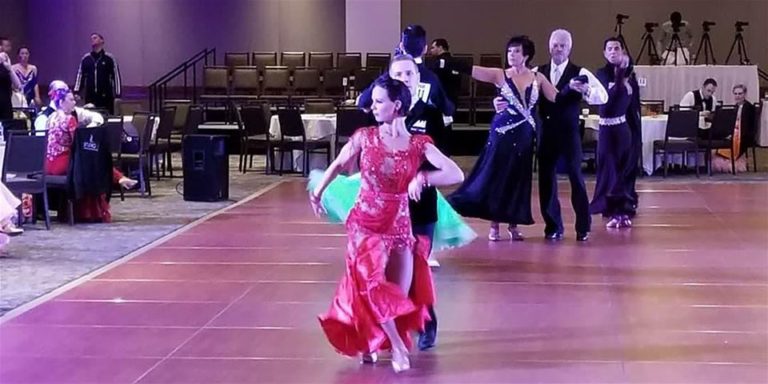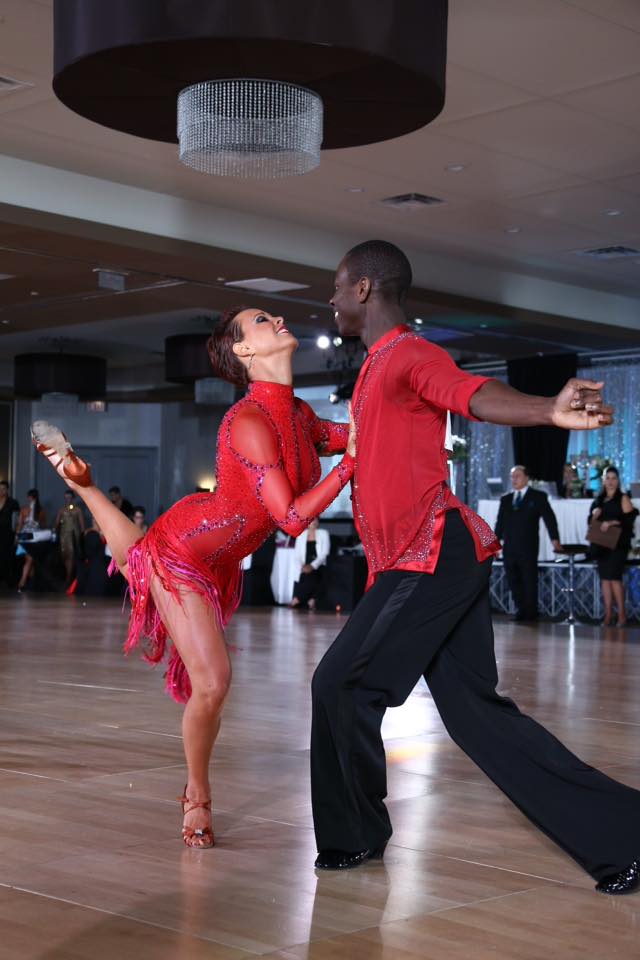Learn to Dance Waltz – Beginners Tutorial
Waltz has a very rich history and it’s one of the oldest dances that are still popular today. Waltz is often danced in both social and competitive settings. You’ll see Waltz danced in the Ballroom and Country-Western circuits under the Smooth and Standard category.
Listed below is a look into what you will learn in today’s blog!
- History and characteristics
- Musical information and the rhythm
- Your first steps in Waltz
- Holding your partner
- Dancing together
History of Waltz
Before Waltz was created, dance was divided between country and courtly forms and there was very little physical contact between dancers. These dancers mostly communicated through curtsies and bows. Then came the Waltz!
The Waltz evolved from an Austrian and German peasant dance called the Landler and was the first widely popular dance to feature a closed position. At this time, dancing in a closed position was considered scandalous and immoral!
Waltz became commonly known by the Box Step and the close hold, which dancers still do today. (you will be learning these later.) It dominated much of the European and American dance scene until WWI.
Waltz is often characterized by its rise and fall, and sway. The feet stay in contact with the floor, creating a smooth, gliding look. Waltz has an elegant gracefulness with a romantic, and sometimes sad feel.
Musical Information and Rhythm
Waltz is typically 30-32 measures per minute and is written in a ¾ time signature. The basic rhythm of this dance is straight forward and simple… at least in the beginning. When we say 3/4 time, it means there are three beats within each measure. A measure is the space between two bar lines in which there are a specific number of beats that repeat consistently throughout the song. In dancing terms, this means you will count ‘1 2 3’ while stepping on each beat. When dancing to music, you should wait until the beginning of a new phrase. A phrase is a specific number of measures that make up a complete thought of music. In Waltz, for example, you will begin counting as soon as you hear the first beat – 123 456, then you can begin dancing on the next “1” count. Some dancers will let what I call a chapter of music go by to begin dancing. A chapter would be counting 123 four times or counting to 6 two times. Sometimes the beat in Waltz music can be tricky to identify, so it can be helpful to wait until you have found the clear beat.
Now that you know more about the music and how to count the Waltz, it’s time to start dancing!
Your First Steps
First, let’s start with the Basic, which is a Box Step. The Box is what we teachers call a “natural opposite” pattern. That means, regardless of whether you are leading or following, your steps will be the same. The only difference is that the leader begins forward with their left foot and the follower will begin back with their right foot. The Box step is a basic pattern in many dances and it literally makes a box on the floor.
Begin by taking a step forward with your left foot, step side with your right then close your left to your right. Next, step back with your right, step side with your left, then close your right to your left. And voila! You have a box! The most important thing to remember is to always change your weight so that you never step with the same foot twice; otherwise, you may be taking off your partner’s toenail… OUCH! Once you feel comfortable with the steps, try adding some music. I personally love “Come Away With Me” by Norah Jones; the beat is easy to hear and it’s on the slower side too! As mentioned earlier, each step is equal to one beat of music, so you can count to three twice to complete the box or count to six once. From there, keep on repeating until it becomes more natural.
Now that you have the steps and rhythm down, let’s focus on the footwork. Dancing with proper footwork is an essential element and it will contribute to proper rise and fall which is one of the main characteristics of Waltz.
Footwork rules:
Every time you step forward on count one, you will take a heel lead – rolling from the back of your foot to the ball of your foot. On count two, you will step onto the ball of your foot, and on count three you will step onto the ball of your foot at the beginning of the step and then lower to your heel by the end of the step. To step back on count one, you will roll from the toe to your heel – which is how you would normally walk backward.
Practice this multiple times until you are comfortable. Once you are ready, we will go into the closed dance hold.
Waltz Box Footwork Video:
Holding Your Partner
Traditionally in the smooth dances, such as Waltz, you will stand two arms-length away facing each other and the leader will invite the follower in by extending his hand out with the palm open. The follower will then respond by extending her hand towards his to connect. Once connected, the follower will take a couple steps forward to close the gap between the partnership as the leader takes his left elbow back to be in-line with his shoulder. The leader’s right hand will connect on the follower’s left shoulder blade with the elbow out wide and lifted. The follower will rest her hand gently on the crease of the leader’s bicep while keeping a light and responsive frame. Lastly, the follower needs to maintain an off-set position to the leader’s right side so that she can maintain a good connection into his hand. Both partner’s need to maintain tone in their arms so that they don’t collapse in towards each other and always remember to move from your center – not your arms.
Now that you are in a nice closed position hold, try dancing the box step with each other and when you feel good about that… add the music!
Waltz Box with a partner:
Sway in WaltzHere is a quick tip for Swaying in Waltz! #dancetips #dancelessons #ballroomdance #americansmooth #houston #justdanze
Posted by Just Danze on Monday, March 9, 2020
I hope you enjoyed today’s post 😊 If you have any suggestions or questions, please don’t hesitate to ask and we’ll do our best to respond as soon as possible.
Bonus Vido – Left Turning Box:





